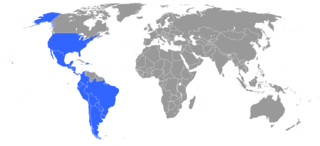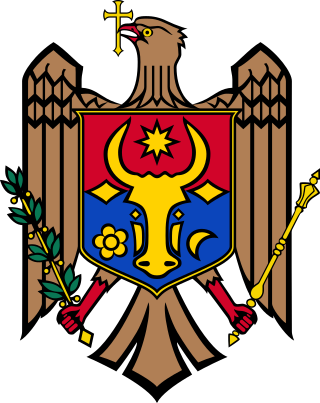A copyright is a type of intellectual property that gives its owner the exclusive right to copy, distribute, adapt, display, and perform a creative work, usually for a limited time. The creative work may be in a literary, artistic, educational, or musical form. Copyright is intended to protect the original expression of an idea in the form of a creative work, but not the idea itself. A copyright is subject to limitations based on public interest considerations, such as the fair use doctrine in the United States.

The World Intellectual Property Organization Copyright Treaty is an international treaty on copyright law adopted by the member states of the World Intellectual Property Organization (WIPO) in 1996. It provides additional protections for copyright to respond to advances in information technology since the formation of previous copyright treaties before it. As of August 2021, the treaty has 110 contracting parties. The WCT and WIPO Performances and Phonograms Treaty, are together termed WIPO "internet treaties".
The copyright law of the European Union is the copyright law applicable within the European Union. Copyright law is largely harmonized in the Union, although country to country differences exist. The body of law was implemented in the EU through a number of directives, which the member states need to enact into their national law. The main copyright directives are the Copyright Term Directive, the Information Society Directive and the Directive on Copyright in the Digital Single Market. Copyright in the Union is furthermore dependent on international conventions to which the European Union or their member states are part of, such as TRIPS Agreement or the Berne Convention.

The Buenos Aires Convention is an international copyright treaty signed in Buenos Aires, Argentina, on 11 August 1910, providing mutual recognition of copyrights where the work carries a notice containing a statement of reservation of rights (Art. 3). This was commonly done with the phrase "All rights reserved" next to the copyright notice. This implementation varied as US law only required the author and year of publishing. Copyright protection under the convention is granted for the shorter of the terms of the protecting country and the source country of the work. The rather vague nature of the requirement for a statement of reservation led to the development of longer and more legalistic wordings, which have persisted despite the developments in international copyright law.
The WIPO Performances and Phonograms Treaty is an international treaty signed by the member states of the World Intellectual Property Organization and was adopted in Geneva on 20 December 1996. It came into effect on 20 May 2002. As of August 2021, the treaty has been 109 contracting parties.
The Rome Convention for the Protection of Performers, Producers of Phonograms and Broadcasting Organisations also known as the International Convention for the Protection of Performers, Producers of Phonograms and Broadcasting Organisations and the Rome Convention, 496 U.N.T.S 43, was accepted by members of the United International Bureaux for the Protection of Intellectual Property (BIRPI), the predecessor to the modern World Intellectual Property Organization, on 26 October 1961. The Diplomatic Conference was jointly convened by BIRPI, the International Labour Organisation, and the United Nations Educational, Scientific and Cultural Organization. The agreement extended copyright related rights protection for the first time to entities or individuals who are not the author but have a close relationship to a copyrighted work, including performers, sound recording producers and broadcasting organizations. As of August 2021, the treaty has 96 contracting parties, with a party defined as a State which has consented to be bound by the treaty and for which the treaty is in force.
The sound recording copyright symbol or phonogram symbol, ℗, is the copyright symbol used to provide notice of copyright in a sound recording (phonogram) embodied in a phonorecord. It was first introduced in the Rome Convention for the Protection of Performers, Producers of Phonograms and Broadcasting Organisations. The United States added it to its copyright law as part of its adherence to the Geneva Phonograms Convention in 17 U.S.C. § 402, the codification of the Copyright Act of 1976.
In copyright law, related rights are the rights of a creative work not connected with the work's actual author. It is used in opposition to the term "authors' rights". Neighbouring rights is a more literal translation of the original French droits voisins. Both authors' rights and related rights are copyrights in the sense of English or U.S. law.
Copyright in Russia developed originally along the same lines as in Western European countries. A first copyright statute dated back to 1828, and in 1857, a general copyright term of fifty years was instituted. The copyright law of 1911 was inspired by Western laws of the continental European tradition. One noteworthy exception in Russian copyright law was the "freedom of translation"—any work could be freely translated into another language.
The international copyright relations of Russia were virtually non-existent for much of the Imperial era continuing into the history of the Soviet Union until the Cold War. The Russian Empire had only a few bilateral copyright treaties with other nations were concluded; these treaties moreover were weak and of short duration. The treaties from Imperial times had all expired by the time of the Russian Revolution.

The Berne Convention for the Protection of Literary and Artistic Works, usually known as the Berne Convention, was an international assembly held in 1886 in the Swiss city of Bern by ten European countries with the goal to agree on a set of legal principles for the protection of original work. They drafted and adopted a multi-party contract containing agreements for a uniform, border-crossing system that became known under the same name. Its rules have been updated many times since then. The treaty provides authors, musicians, poets, painters, and other creators with the means to control how their works are used, by whom, and on what terms. In some jurisdictions these type of rights are being referred to as copyright.
The WIPO Copyright and Performances and Phonograms Treaties Implementation Act, is a part of the Digital Millennium Copyright Act (DMCA), a 1998 U.S. law. It has two major portions, Section 102, which implements the requirements of the WIPO Copyright Treaty, and Section 103, which arguably provides additional protection against the circumvention of copy prevention systems and prohibits the removal of copyright management information.
Panama has passed several laws protecting intellectual property in the country.
The Corporate Affairs and Intellectual Property Office (CAIPO) is a Barbadian governmental agency in charge of various aspects of industrial property right affairs including: patents, trademarks, and industrial designs. It is a division of the Ministry of Industry & International Business. The CAIPO office is located on Belmont Road, Saint Michael, Barbados. The country ranks as one of the top countries where the greatest number of foreign patents are legally based.
Copyright law in Syria is regulated by the Copyright and Neighbouring Rights Law issued by Legislative Decree No. 62 of 2013. The Syrian Ministry of Culture, through its Copyright Office, is generally in charge of proposing copyright legislation to Parliament.
The Constitution of Azerbaijan generally recognizes the right to intellectual property (IP), and ensures the protection of IP rights of all persons. In order to clarify the norm of Constitution, and establish the legal basis of the protection of intellectual property rights, the parliament of Azerbaijan approved some laws, and ratified international agreements.

The copyright law of Moldova regulates the copyright laws of Moldova. The first official decree related to copyright in the country was made on 25 November 1991, shortly after its independence on 27 August of the same year. On 25 May 1991, the State Agency on the Protection of Industrial Property (AGEPI) was created, making it the second copyright agency in the country together with the State Agency for Copyright (ADA). In 1993, Moldova signed an agreement on cooperation in the protection of copyright and the related rights between it and other countries, all members of the Commonwealth of Independent States (CIS), which only came into force in 1999. By the time of this year, Moldova had already created its official copyright law: Law No. 293-XIII, from 1994 but applied since 1995.




